
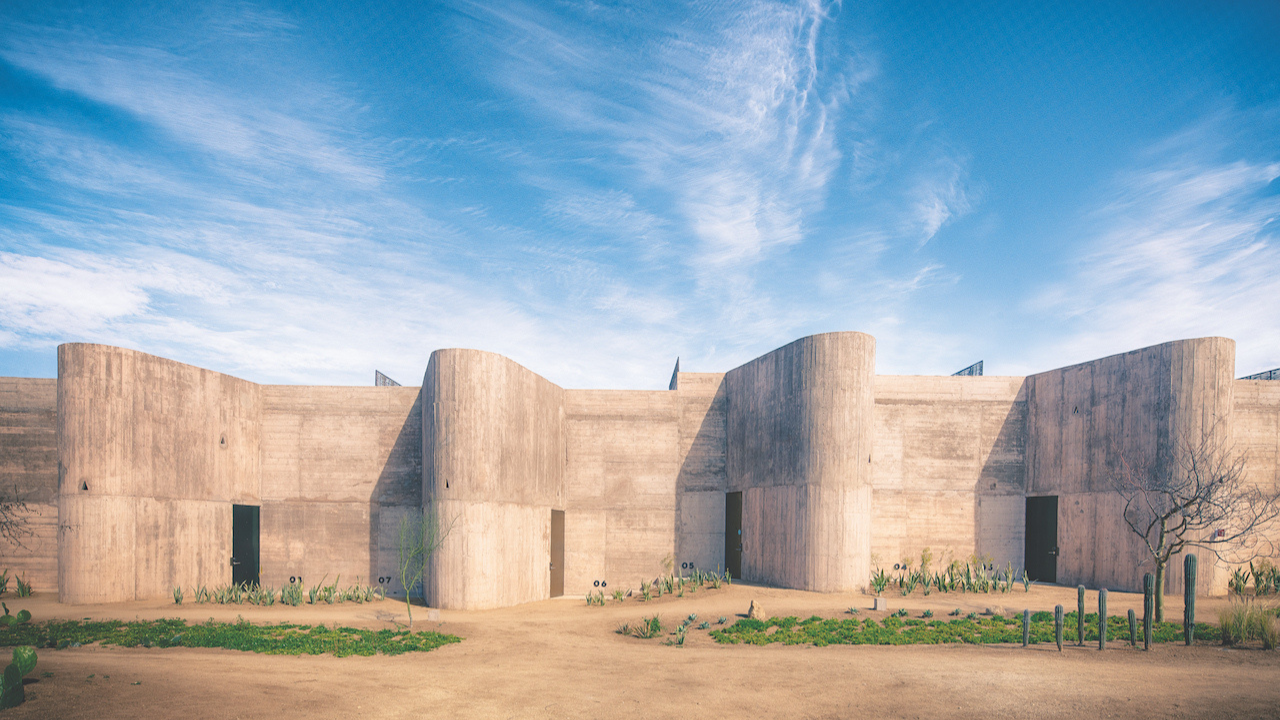
Sustainability is more than a buzz word at Paradero Todos Santos, a luxury “soft adventure” destination located in Mexico’s Baja region. The 35-suite property, which opened in February 2021 and is the brainchild of Mexican entrepreneurs Pablo Carmona and josh Kremer, goes above and beyond to use local products and employ workers from the neighboring area, helping to earn the property a UNESCO Biosphere Reserve designation — of which there are only two in Baja.
“Paradero is an experience inclusive destination rooted in meaningful connections with nature, sustainability, community development and conservation,” Carmona and Kremer tell GRAZIA Gazette: Hamptons. “Experiences with biodynamic farmers, meditation classes alongside the sunflower fields, and morning and sunset hikes in the Sierra de la Laguna Mountains are all included in the stay. It’s in part to encourage guests to get out and explore.”
A haven for surfers and outdoor enthusiasts, Paradero Todos Santos describes itself as “80 percent landscape, 20 percent construction project.” Spread out over 160 acres of family-owned farms within the La Mesa farming community, Paradero — which translates loosely to “a stop on the road” — was built on the fundamental belief that “extraordinary experiences go hand-in- hand with sustainability, community development, and conservation.” With over 355 days of sunshine and direct flights from major cities including San Francisco, Los Angeles, Phoenix, Houston, Denver, and New York City, it’s always a good time to visit.
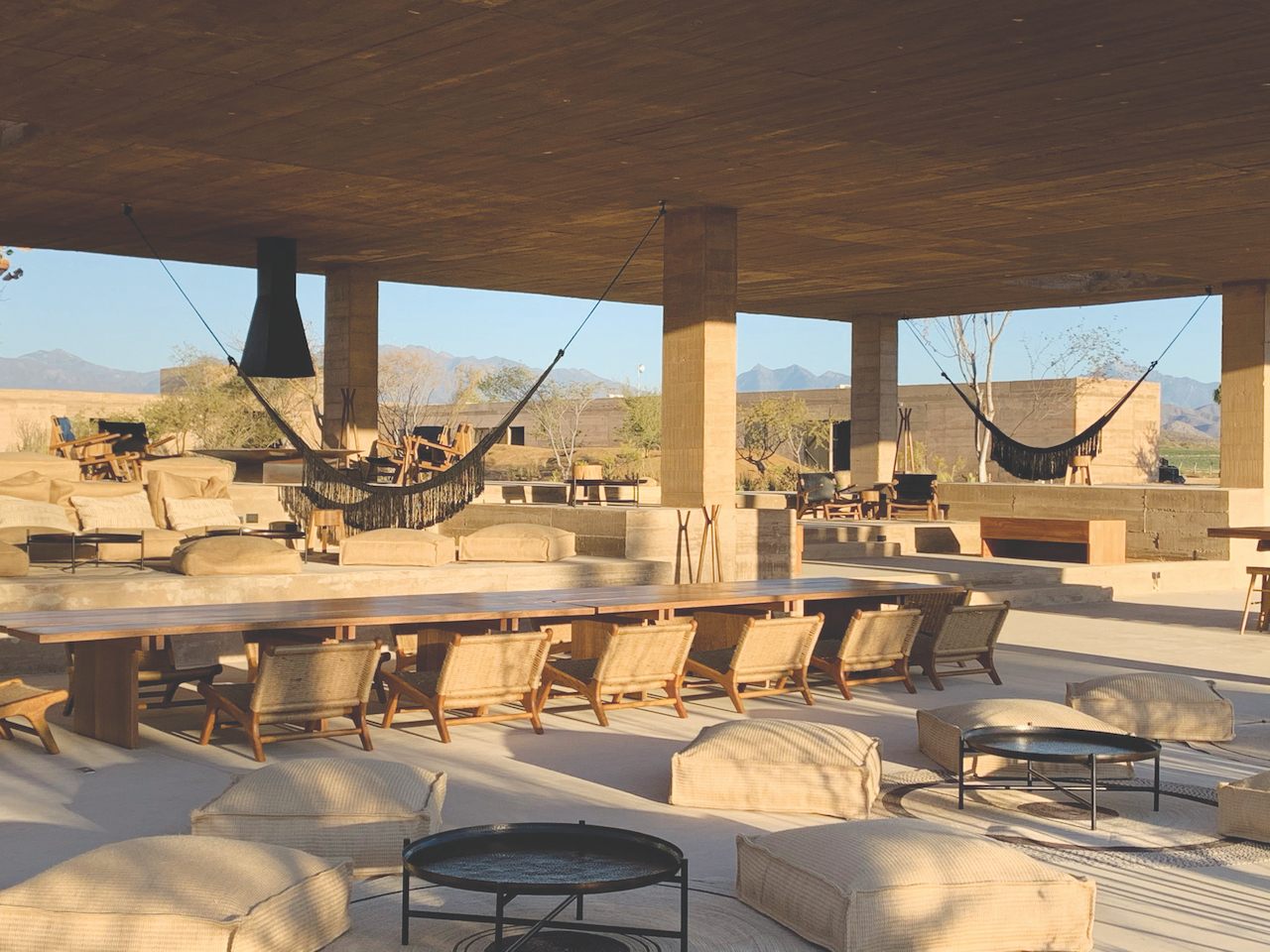
By immersing guests in nature, Paradero pays homage and respect to the land it inhabits, just a short hour ride away from San Jose del Cabo airport. Employing locals ensures that generations of knowledge about this lush oasis tucked away in desert land at the foot of the Sierra de la Laguna mountain range remain intact.
“Todos Santos is a unique place in Baja where five distinct eco-systems collide: desert, mountains, beaches, a palm tree oasis, and farmland,” Carmona and Kremer explain. “There’s no other place where you can find such a diverse landscape in such a small pocket.”
The grounds at Paradero Todos Santos feature more than 100,000-square feet of botanical gardens, comprised of 80 endemic species including red sand verbena, Mojave yucca, and Shaw’s agave. Curated by Mexico City-based landscape architecture firm Polen — whose past clients include Google and Twitter — the spread includes more than 20,000 plants, many of which were on the land before the resort was built.
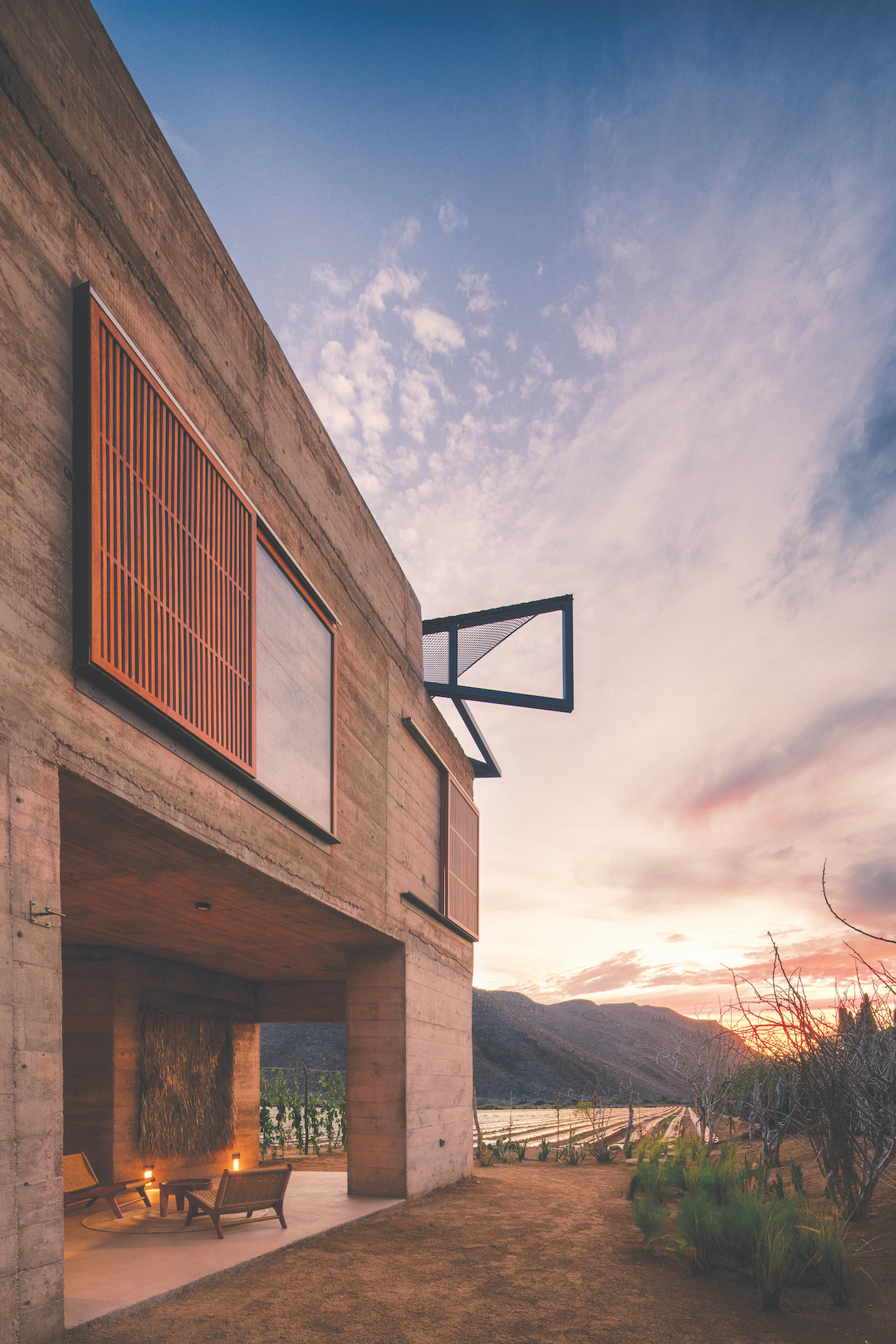
Constructed using locally sourced beige concrete to blend seamlessly into the landscape, the property also features accents of Mexican tornillo wood, metal, and textiles. It was designed with a trapezoid-shaped to ensure breathtaking views from every suite.
From the artisan-made furniture and the rooftop yoga deck to the open-fire kitchen with a traditional Oaxcan clay oven and multi-purpose “Living Room,” there is a sense of authenticity and thoughtfulness in every corner of the resort.
The 35 suites designed by interior design firm B Huber feature custom-made furnishings that have been locally sourced from Guadalajara and Oaxaca, with no detail overlooked. The 16 Garden Suites offer the ultimate in indoor/outdoor living, complete with hammocks and outdoor soaking tubs; Rooftop Suites allow guests an unforgettable view of the surrounding farmland, mountains, and ocean. The showstopping corner Master Casita occupies three floors including a kitchenette, dining area, and plunge pool — the ultimate in privacy and understated luxury.
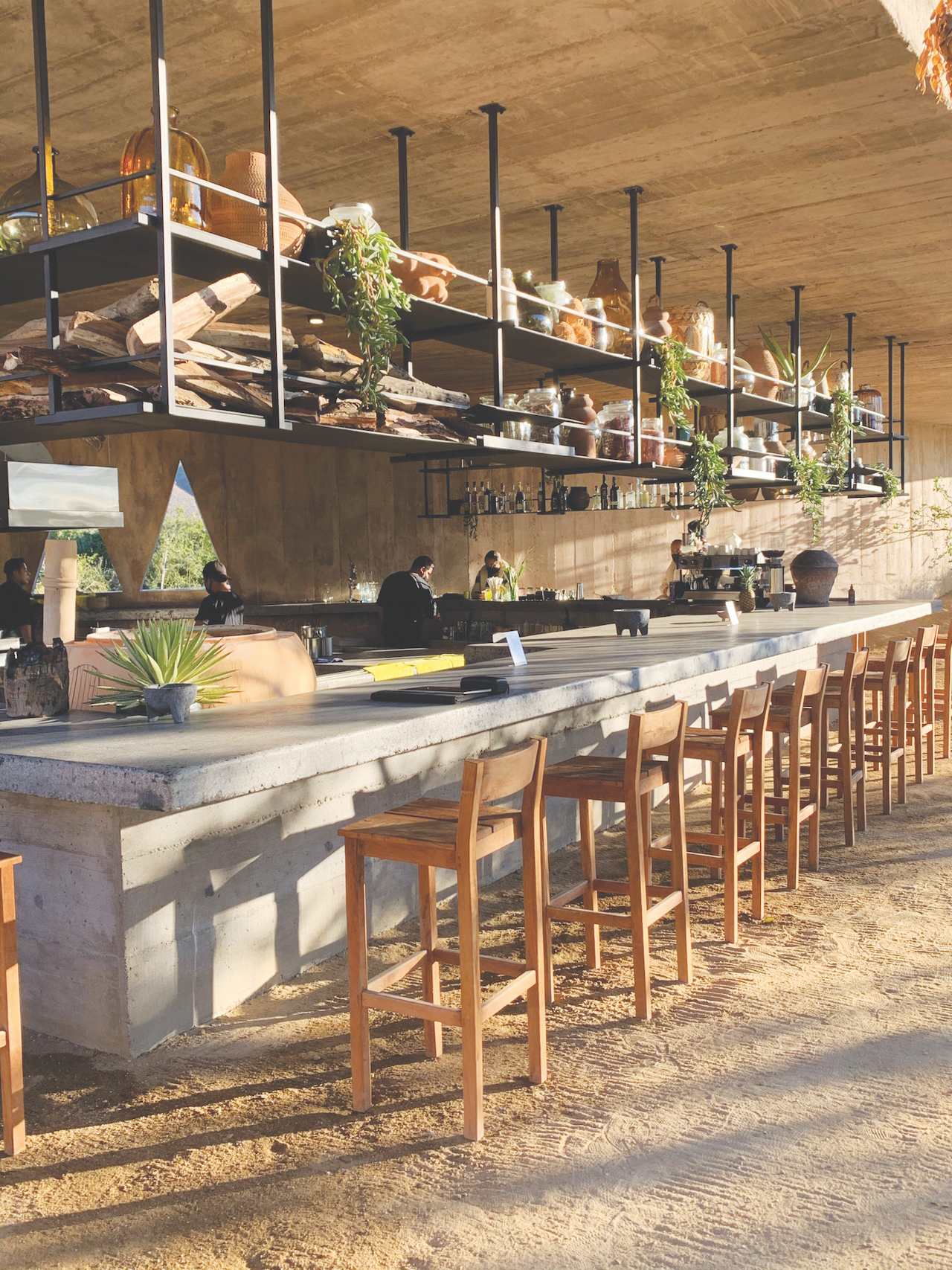
“We wanted to create a hotel that would exist in harmony with the community and natural beauty to blur the line between indoor and outdoor living,” Carmona and Kremer say. “Paradero aims to promote Mexico’s design talent, work with ‘honest’ materials and utilize the highest-quality craftsmanship from furniture to textiles. We spent more than a year designing with our architecture, interior design, and landscaping teams, where the same importance was given to each practice.”
Just as much thought went into creating the rest of the offerings at Paradero Todos Santos as well. Chef Eduardo Rios, a Pujol alum, heads up the kitchen, which has become known as a destination in itself for both travelers and locals alike. The culinary team only uses five purveyors and dishes are created using a maximum of five ingredients.
“We are bringing farm-to-table to another level,” boast Carmona and Kremer. “Just steps from our restaurants are our on-site garden and we’re surrounded by more than a dozen family farms. We source as much as possible from our immediate farms, seas and ranches.”
The region’s Mediterranean climate is ideally suited for growing the herbs and vegetables that are used to craft dishes at the adult- only Paradero restaurant, including Grilled Chocolata clams, Bone Marrow Tamal, Green Scallop Aquachile and Huitlacoche Ceviche. At Pericúe Bar, a customized tasting menu of heirloom corn tortillas, smoked meat, and fish is complemented with cocktails made from fresh-pressed juices and homemade mixers.
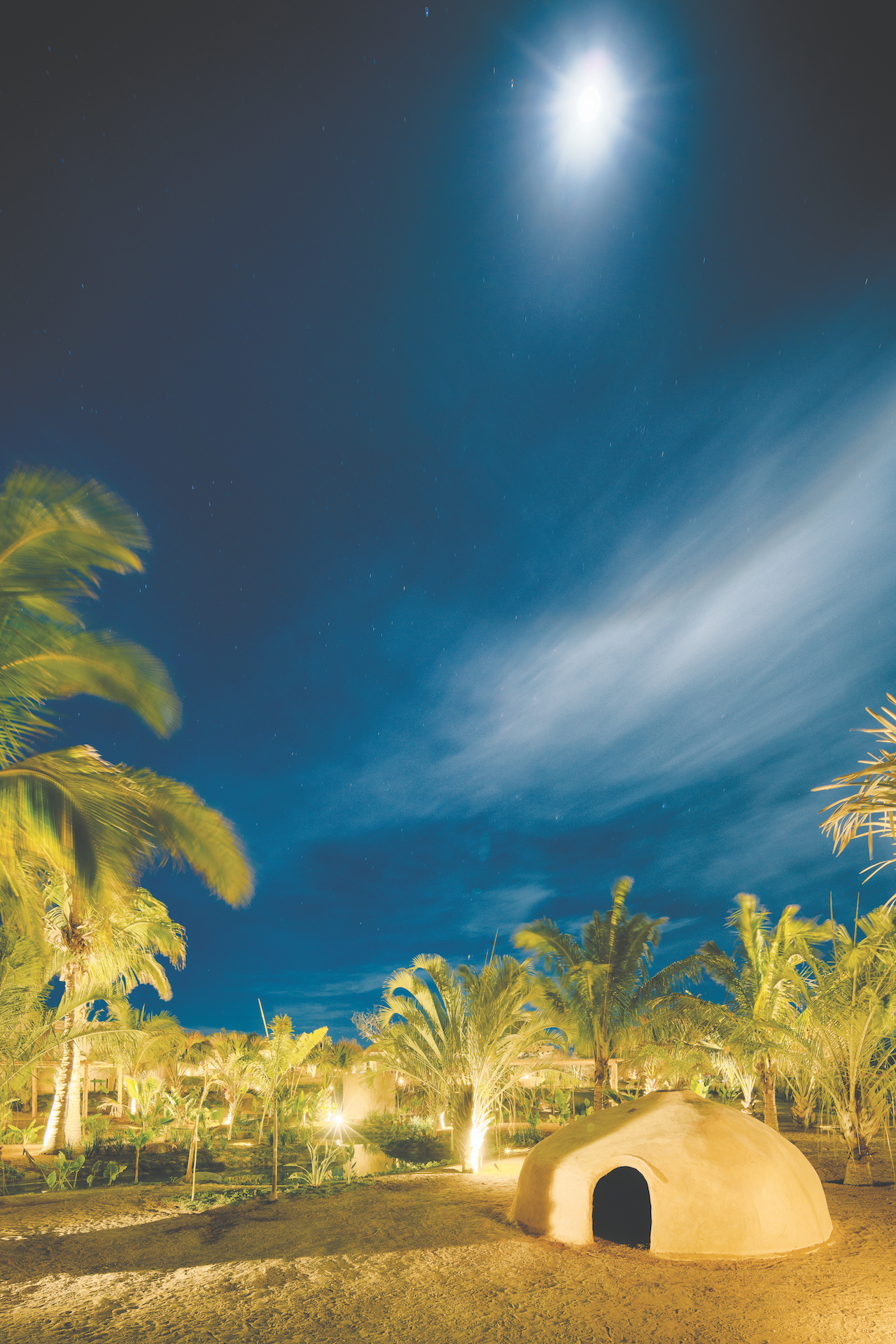
Wellness is a top priority at Paradero Todos Santos, with activities like surfing, yoga and mountain biking and hiking on offer. The Ojo de Agua Spa is a highlight, with everything from Sage Hot Stone and After Hike Sports Massages to a Sound Healing Experience and the From De City to the Desert facial. Those seeking something rooted in local tradition should opt for the Traditional Rituals, like the Yenekamu Ritual from the aboriginal inhabitants of Baja or the Temazcal Treatment.
“Our goal is to offer life-changing wellness and healing experiences,” say Carmona and Kremer. “The authentic Temazcal treatment takes place in a ‘hut’ that was crafted from adobe from local soil and by a local Temazcal builder. The ceremony is led by our full-time Mexican Shaman. Once inside, hot volcanic rocks are placed in the center and water is poured over the rocks to produce steam. The treatment has been part of Mexican culture for around 1,000 years.”














